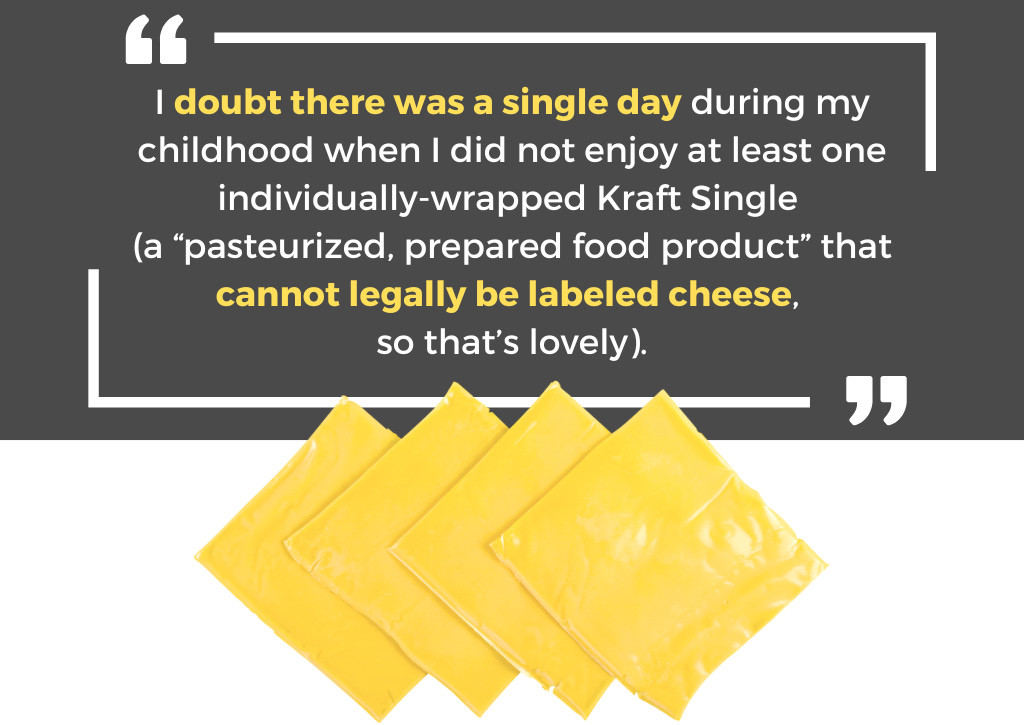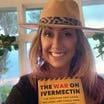We Need to Talk about Forever Chemicals
Jenna McCarthy's 9 simple changes to limit exposure to PFAS and make your home healthier.
I was raised in the convenience-food era by New York City-born parents who were the farthest thing from granola two people could possibly be. We ate sugary cereals for breakfast and canned vegetables soup fruit everything for dinner and I doubt there was a single day during my childhood when I did not enjoy at least one individually-wrapped Kraft Single (a “pasteurized, prepared food product” that cannot legally be labeled cheese, so that’s lovely). The term “farmer’s market” did not exist in our family vocabulary.
It took me a few decades to learn what a forever chemical was, and only about a nanosecond to realize my blood and organs were surely coursing with them. At the time, I routinely cooked in Teflon pans (so convenient!), drank my weight in bottled water weekly (so healthy!), and had more Tupperware than a potluck has potato salads. Did somebody say microwave popcorn? I’ll melt the margarine!
[Please note that there’s no need to shame me over any of this. Believe me, if I could go back in time and punch my clueless younger self in the face and introduce her to cast iron, I’d have already done it. Right after I found the folks responsible for wrapping all of my favorite snacks in toxins and rearranging their sense of direction.]
Forever chemicals—technically termed PFAS, for per- and polyfluoroalkyl substances—are a class of compounds that have been produced since the 1940s by companies like 3M and DuPont, originally for things like greasing machinery parts, insulating wire, extinguishing petroleum-based fires, and developing atomic bombs. But because the product was so darned versatile, within a decade, PFAS had been incorporated into consumer packaging from fast food burger wraps and takeout containers to pizza boxes and microwave popcorn bags.
PFAS are called "forever chemicals" because of their Herculean carbon-fluorine bonds, which make them highly resistant to degradation. They could also be called “everywhere chemicals,” because today—thanks to their ability to resist water, oil, and stains—PFAS are in pretty much everything, including firefighting foam, fishing line, fertilizers, cosmetics, carpets, couches, cookware, cleaning products, car wax, dental floss, sportswear, smartphones, sealants, surgical equipment, roofing materials, disposable bowls and plates, mattress protectors, pet food bags, all manner of camping gear, and more.
Unsurprisingly, such widespread usage means that our environments are literally teeming with these toxins. In fact, studies have found that 45% of the nation’s tap water supply is estimated to contain one or more forever chemical, and 97% of Americans who have been tested have PFAS compounds in their bodily fluids. This is especially alarming as these chemicals have been linked to un-fun things like cancer, liver damage, reduced fertility, immune system suppression, and developmental delays in children.
It’s a lot, I know. And there’s really no way to avoid PFAS entirely (RJK, Jr. we need you!). But we can certainly minimize our exposure—something my family has been working on since the day we stocked up on glass food storage containers and switched (back) to wooden cooking utensils. Some other health-preserving tips and tactics:
Take stock of your cookware. Ceramic, cast iron, stainless steel, and glass are your friends. Nonstick is the devil’s coating.
Ditch your plastic cutting boards. This one was tough for me because I have a thing about raw chicken in particular and I liked being able to toss them in the dishwasher. I really only needed to read one study—and there are several—that found these handy tools are a significant source of microplastics in food to get over it.
Invest in a good water filter (such as reverse osmosis or activated carbon) that removes PFAS.
Rethink food storage. If something comes wrapped in plastic, either don’t buy it (not always possible) or toss the packaging and store it in glass or wrap it in parchment or wax paper—most of which is made with natural wax, but check the box to be sure because I’m sure somebody out there is spraying that stuff with something hazardous [checks to see if Bill Gates has invested in Reynolds].
Don’t forget cosmetics and personal care products. Avoid anything with ingredients starting with "Perfluoro-" or "polyfluoro-"and anything labeled waterproof or long-lasting. Choose brands that explicitly state they are PFAS-free.
Download a product safety app. There are lots of them out there, but I’m obsessed with Yuka. The free version lets you scan both food and personal care products at home or in the store and will tell you exactly how safe it is (or isn’t). If something gets a lousy rating, the app offers healthier alternatives. For a monthly fee, you can search for any product by name without having to scan it. Be warned: It’s ridiculously addictive.
Avoid “stain-resistant” or “waterproof” products, which are likely made that way through PFAS. If something gets stained or you get wet, I promise you’ll survive.
Ban microwave popcorn from your home. This should be simple, as that stuff’s nasty. If you haven’t made homemade stovetop popcorn in olive or coconut oil, you haven’t had popcorn.
Get fresh. Any time you can choose fresh over packaged produce, you win. Bring these mesh bags to the grocery store and you won’t have to transfer them when you get home. [*Dusts off spot on mantle for Homemaker of the Year trophy]
What are you doing [or what do you plan to do] to make your home healthier? Brag it up in the comments. :)










I love the humor infused in this most terrifying information that RFK Jr has often been expounding about for years and successfully suing drug companies for manufacturing these additive and wrappers in all our food stuffs in modern grocery stores. Pls buy local. Farmers’ markets are your best friends. Eat clean and fresh!
The mesh bags you rec are from China. Amazon Tips:
1. Whenever you shop on Amazon, go to where it says “one time purchase” or the price area. See where it says “Ships from” and “Sold by.” Click “Sold by” and scroll down to around halfway down the page to the section about the Seller. It will show the address. It’s not foolproof but generally you can see when it’s from China that way.
2. If you sort results by Small Business in results you can also have higher likelihood of more domestic companies.